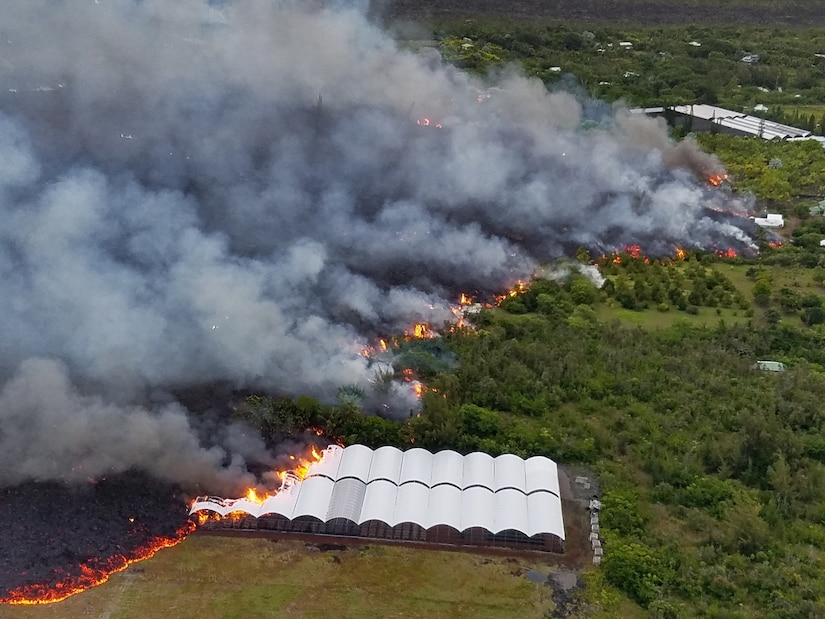By Jim Garamone, DoD News, Defense Media Activity
WASHINGTON -- Hawaii National Guard service members are on
duty to keep their fellow citizens safe as the Kilauea volcano continues
spewing lava.
Army Command Sgt. Maj. Elva A. Schaben briefed Pentagon
reporters today from the Hilo airport, where the Hawaii National Guard has set
up a command center for the effort.
The National Guardsmen use skills honed in combat to aid
fellow citizens who are affected by the eruption.
The National Guard mantra is “Always ready, always there,”
said Air Force Chief Master Sgt. Ron Anderson, the senior enlisted leader for
the Hawaii Air National Guard. It is a part of the force’s DNA to help others,
he said.
Anderson said that in addition to Hawaii Guardsmen,
personnel from Florida, Guam, Washington, Utah, Maryland and Arizona also
helping in the effort.
Schaben has been deployed on Operation Pa’a Mau for about 30
days. “As we stood up this operation on 14 May, the Hawaii National Guard,
which includes both Army and Air Guard personnel, were activated,” she said.
“Our mission here is to save lives, prevent human suffering and to allow the
people affected by volcanic activity to live their lives the best they can.”
The effort on Hawaii’s Big Island also received support from
Marines, sailors and soldiers from the active components. “Part of the mission
is to support the Hilo Police Department,” Schaben said. “We have soldiers
providing security. We also have roving patrols going through the area affected
by volcanic activity.” A civil support team provided chemical, biological
radiation, nuclear and explosives operations monitoring the areas affected by
sulfur dioxide and hydrogen sulfide that were created by the volcano, she
added.
About 380 Guardsmen have been activated for the disaster.
They come from all over the state, including an engineer company out of Maui.
The Guard also sent Black Hawk helicopters, supported by the 25th Aviation
Brigade, which sent assets from Oahu. Soldiers from Hawaii’s infantry unit and
field artillery unit also are helping, Schaben said.
Working Safely
The soldiers are working at a safe distance from the
fissures, and National Guardsmen do not overfly fissures, some of which are
spewing lava more than 250 feet in the air. Other soldiers are much closer,
taking measurements of the gases in the community to assess the safety of the communities
affected.
“This is real-world training, boots-on-the-ground training,
that is absolutely a force enabler for our folks downrange tied to the war
fight,” Anderson said.
More than 200 houses have been lost due to the volcano, and
four National Guardsmen are among those who have lost everything, Schaben said.
Still, they are out helping their fellow citizens in the midst of the
emergency.
Schaben said the soldiers and airmen could airlift about 400
people out of the area in four hours if called upon by civil authorities. They
have not had to evacuate anyone yet, as local police have been able to do so by
land.
The National Guardsmen will continue to be on call if
needed.
“There is no limit to the operation,” Schaben said. “We are
working on a rotation plan, but we will still have soldiers here because as we
transition, the community is still going to need our support.”









No comments:
Post a Comment